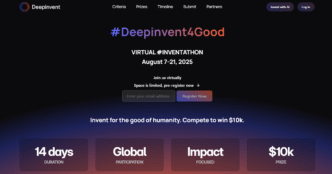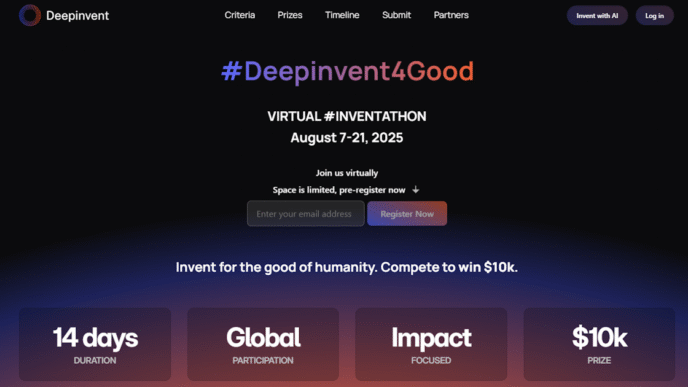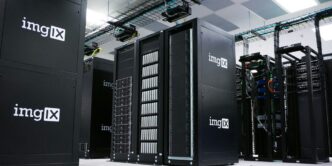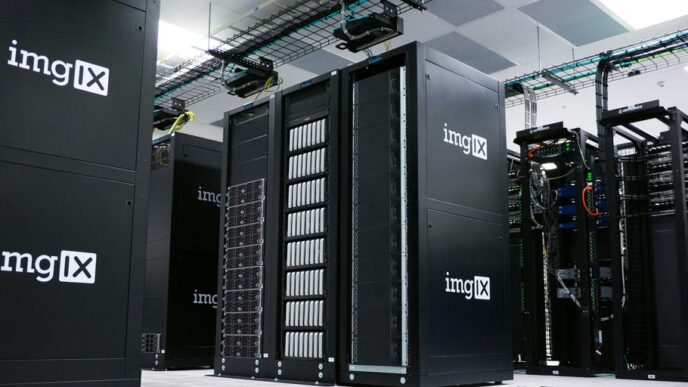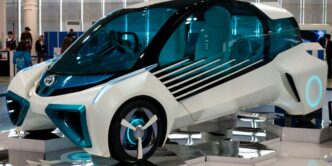The recent layoffs at Google, particularly in its AI and advertising sectors, highlight significant changes in the tech industry. These layoffs reflect a broader trend towards automation, which is reshaping how companies operate and impacting the workforce. As companies prioritize efficiency through technology, understanding the implications of these changes is crucial for employees and stakeholders alike.
Key Takeaways
- Google’s layoffs in AI signal a shift towards more automated processes in tech.
- Many employees are facing immediate job loss, raising concerns about their future.
- Automation is expected to grow, affecting job availability in various sectors.
- Other tech companies are also reducing staff, illustrating a wider industry trend.
- Experts warn that while automation can improve efficiency, it may also lead to economic challenges for workers.
The Impact of Google’s Layoffs in AI and Advertising
Reasons Behind the Layoffs
Google’s recent layoffs in its AI and advertising sectors have raised many eyebrows. The main reasons include cost-cutting measures, a shift in focus towards automation, and the need to streamline operations. These changes reflect a broader trend in the tech industry where companies are increasingly relying on AI to enhance efficiency.
Immediate Effects on Employees
The immediate impact on employees has been significant. Many workers are facing job insecurity and uncertainty about their future. Here are some key points regarding the immediate effects:
- Job Losses: Thousands of employees have been laid off.
- Emotional Toll: Many employees are experiencing stress and anxiety.
- Skill Gaps: There is a growing concern about the skills needed for future roles.
Long-term Implications for the Industry
In the long run, these layoffs could reshape the industry. Companies may prioritize automation over human labor, leading to:
- Increased Automation: More tasks will be handled by AI.
- Job Displacement: Certain roles may become obsolete.
- New Opportunities: While some jobs will disappear, new roles in AI management and oversight may emerge.
The shift towards automation is not just a trend; it’s a fundamental change in how businesses operate. Companies must adapt to survive in this evolving landscape.
Automation Trends in the Tech Industry
Rise of AI and Machine Learning
The tech industry is seeing a huge increase in the use of AI and machine learning. Companies are adopting these technologies to improve efficiency and reduce costs. Here are some key points:
- AI helps in data analysis and decision-making.
- Machine learning allows systems to learn from data and improve over time.
- Many businesses are investing heavily in AI research and development.
Shift Towards Automated Processes
As automation becomes more common, many companies are changing how they operate. This shift includes:
- Replacing manual tasks with automated systems.
- Streamlining workflows to enhance productivity.
- Using robots and software to handle repetitive jobs.
Impact on Job Market Dynamics
The rise of automation is changing the job market. Some effects include:
- Job displacement in certain sectors, especially in manufacturing.
- New job opportunities in tech and AI-related fields.
- A need for workers to learn new skills to stay relevant.
The shift to automation is not just about technology; it’s about how we adapt to these changes in our work lives.
In summary, the tech industry is rapidly evolving with automation, leading to both challenges and opportunities for workers and companies alike.
| Trend | Description |
|---|---|
| AI Adoption | Increased use of AI for efficiency |
| Automation of Tasks | Replacing manual work with machines |
| Job Market Changes | New roles emerging in tech and AI |
How Google’s Layoffs Reflect Broader Industry Changes
Comparison with Other Tech Giants
Google’s recent layoffs are not an isolated incident. Other major tech companies, such as Microsoft and Meta, are also making similar moves. This trend indicates a shift in how these companies are approaching their workforce and technology. The focus is increasingly on automation and efficiency.
Industry-Wide Shift to Automation
The tech industry is experiencing a significant transition towards automation. Companies are investing in AI and machine learning to streamline operations. This shift can be summarized in three key points:
- Increased reliance on AI for data management.
- Reduction in manual labor as machines take over repetitive tasks.
- Focus on innovation to stay competitive in a rapidly changing market.
Reactions from Market Analysts
Market analysts are closely watching these changes. Many believe that the layoffs at Google and other tech giants signal a broader trend. They suggest that:
- Job roles will evolve, requiring new skills.
- Companies must adapt to remain relevant.
- Investments in training will be crucial for the workforce.
The landscape of employment in tech is changing, and companies must navigate this shift carefully to ensure a balance between automation and human labor.
Economic and Social Implications of AI Layoffs
Effect on Local Economies
The layoffs at major companies like Google can have a significant impact on local economies. When employees lose their jobs, it can lead to:
- Decreased spending in local businesses
- Increased demand for social services
- Potential rise in crime rates
Changes in Workforce Demographics
As automation increases, the workforce is changing. This shift can lead to:
- A decline in middle-skill jobs
- An increase in demand for high-skill positions
- A growing number of low-skill jobs
Social Repercussions of Automation
The social effects of these layoffs can be profound. Lawmakers are recognizing that sudden mass layoffs lead to a host of secondary problems, including increased demands on social services. This can create a cycle of economic instability that affects not just the laid-off workers but the entire community.
The transition to automation is not just a technological shift; it is a societal challenge that requires careful planning and support for affected workers.
Future Outlook: AI and Employment
Predictions for AI Job Market
The future of the job market in relation to AI is uncertain but promising. Experts predict that while some jobs may disappear, new opportunities will emerge. Here are some key predictions:
- Growth in AI-related jobs: Positions in AI development, maintenance, and oversight are expected to increase.
- Shift in skill requirements: Workers will need to adapt by learning new skills, especially in technology and data analysis.
- Increased collaboration: Human workers will increasingly work alongside AI systems, enhancing productivity.
Potential for New Job Creation
Despite fears of job loss, there is potential for new job creation in various sectors. Some areas to watch include:
- Healthcare: AI can assist in diagnostics, leading to more roles in patient care and technology management.
- Education: New teaching methods using AI will require educators to adapt and innovate.
- Green Technology: As industries shift towards sustainability, jobs in renewable energy and environmental management will grow.
Balancing Automation and Human Labor
Finding a balance between automation and human labor is crucial. Here are some strategies:
- Reskilling programs: Companies should invest in training their employees to work with AI technologies.
- Policy support: Governments can create policies that encourage job creation in emerging fields.
- Focus on human-centric roles: Emphasizing jobs that require emotional intelligence and creativity can help maintain employment levels.
The integration of AI into the workforce is not just about replacing jobs; it’s about enhancing human capabilities and creating a more efficient work environment.
In conclusion, while the rise of AI presents challenges, it also offers significant opportunities for growth and innovation in the job market. By preparing for these changes, both workers and companies can thrive in an increasingly automated world.
Strategies for Navigating the Shift to Automation

Reskilling and Upskilling Workforce
To keep up with the fast changes in technology, companies need to focus on reskilling their employees. This means teaching them new skills that are relevant in an automated world. Here are some key steps:
- Identify skill gaps: Find out what skills are needed for new technologies.
- Create training programs: Develop courses that help employees learn these skills.
- Encourage continuous learning: Make learning a regular part of the job.
Policy Recommendations
Governments and organizations should work together to create policies that support workers during this transition. Some recommendations include:
- Financial support for training: Provide funds for employees to take courses.
- Job placement services: Help workers find new jobs if their current ones are automated.
- Incentives for companies: Encourage businesses to invest in employee training.
Corporate Strategies for Smooth Transition
Companies can take several steps to ensure a smooth shift to automation:
- Communicate openly: Keep employees informed about changes and what they mean for their jobs.
- Involve employees in planning: Get feedback from workers on how to implement new technologies.
- Monitor progress: Regularly check how well the transition is going and make adjustments as needed.
Adapting to AI and the changes in workplace culture is crucial. Create and communicate a technical training plan to bridge the digital divide in non-IT roles, which can lead to resistance towards technological changes.
Case Studies: Companies Adapting to Automation
Successful Adaptation Stories
Many companies have successfully integrated automation into their operations. Here are a few examples:
- Amazon: Utilizes robots in warehouses to speed up order fulfillment.
- Tesla: Employs advanced robotics in manufacturing to enhance production efficiency.
- Zara: Uses automated inventory systems to manage stock levels effectively.
Lessons Learned from Failures
Not all attempts at automation have been successful. Some key lessons include:
- Employee Training: Companies that failed often neglected to train their staff on new technologies.
- Integration Issues: Poor integration of automated systems with existing processes led to disruptions.
- Ignoring Feedback: Companies that did not listen to employee concerns faced resistance and low morale.
Best Practices for Implementation
To ensure a smooth transition to automation, companies should consider the following:
- Involve Employees: Engage staff in the planning process to gain insights and reduce resistance.
- Provide Training: Offer comprehensive training programs to help employees adapt to new tools.
- Monitor Progress: Regularly assess the impact of automation and make adjustments as needed.
Automation can greatly enhance efficiency, but it must be implemented thoughtfully to avoid negative consequences.
In summary, while many companies are successfully adapting to automation, there are important lessons to be learned from both successes and failures. By following best practices, organizations can navigate this shift more effectively.
Conclusion
In summary, Google’s recent layoffs highlight a larger trend in the tech industry towards automation. As companies look to save money and improve efficiency, many are turning to AI and machines to take over tasks once done by humans. This shift raises important questions about the future of work and the roles that people will play in a world increasingly dominated by technology. While automation can lead to greater productivity, it also risks leaving many workers behind. It’s crucial for businesses and society to find a balance that embraces innovation while also supporting the workforce affected by these changes.
Frequently Asked Questions
What led to Google’s layoffs in the AI sector?
Google’s layoffs were mainly due to a shift towards automation and the need to cut costs in response to changing market conditions.
How do these layoffs affect current employees?
The layoffs have caused uncertainty and stress among remaining employees, as they worry about job security and the future of their roles.
What are the long-term effects of these layoffs on the tech industry?
In the long run, these layoffs may lead to a smaller workforce in certain areas, as companies increasingly rely on automated systems.
How is automation changing the job market?
Automation is replacing some jobs while creating new opportunities in tech fields, but it often requires workers to have different skills.
What can workers do to adapt to these changes?
Workers can focus on learning new skills, especially in tech and automation, to stay relevant in the job market.
What does the future hold for jobs in AI?
The future of jobs in AI is uncertain, but there is potential for new roles to emerge, particularly in managing and developing AI technologies.


